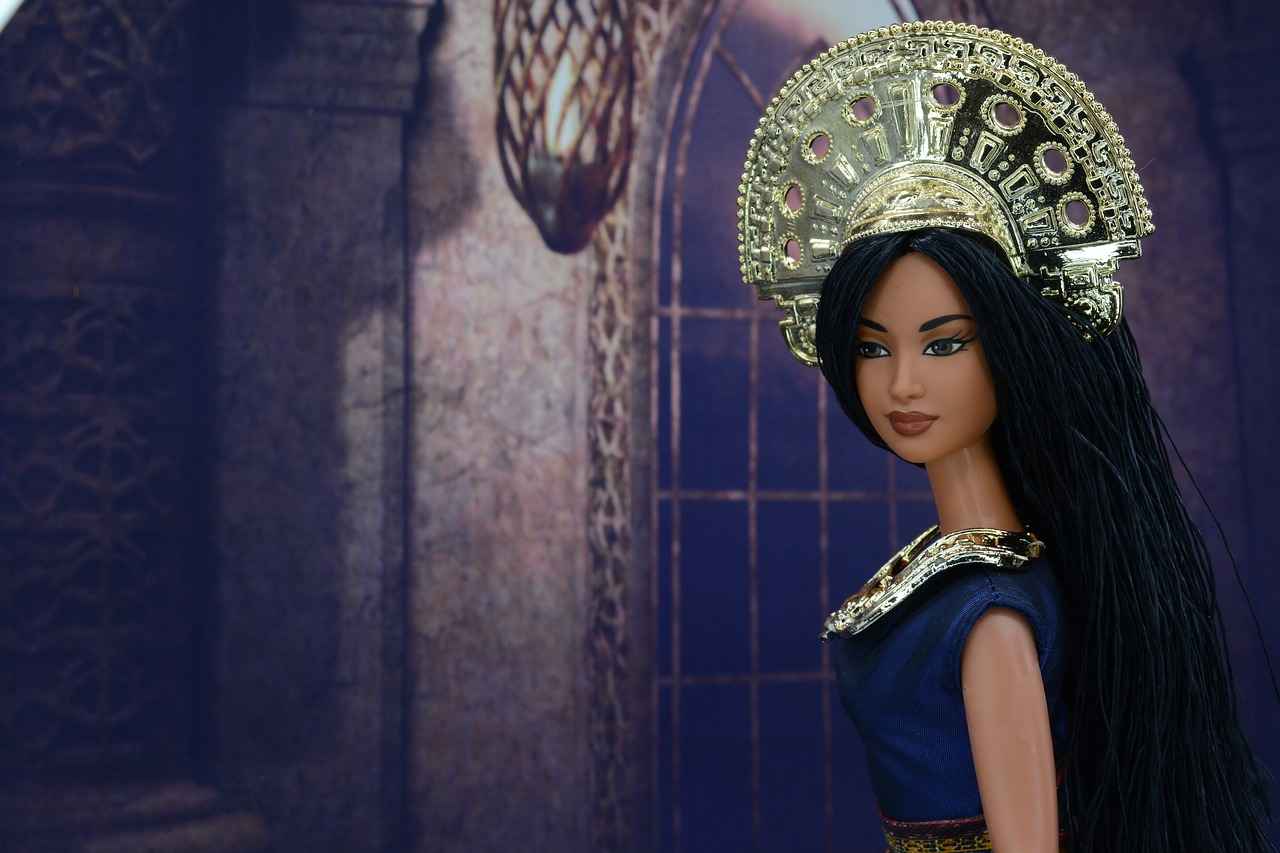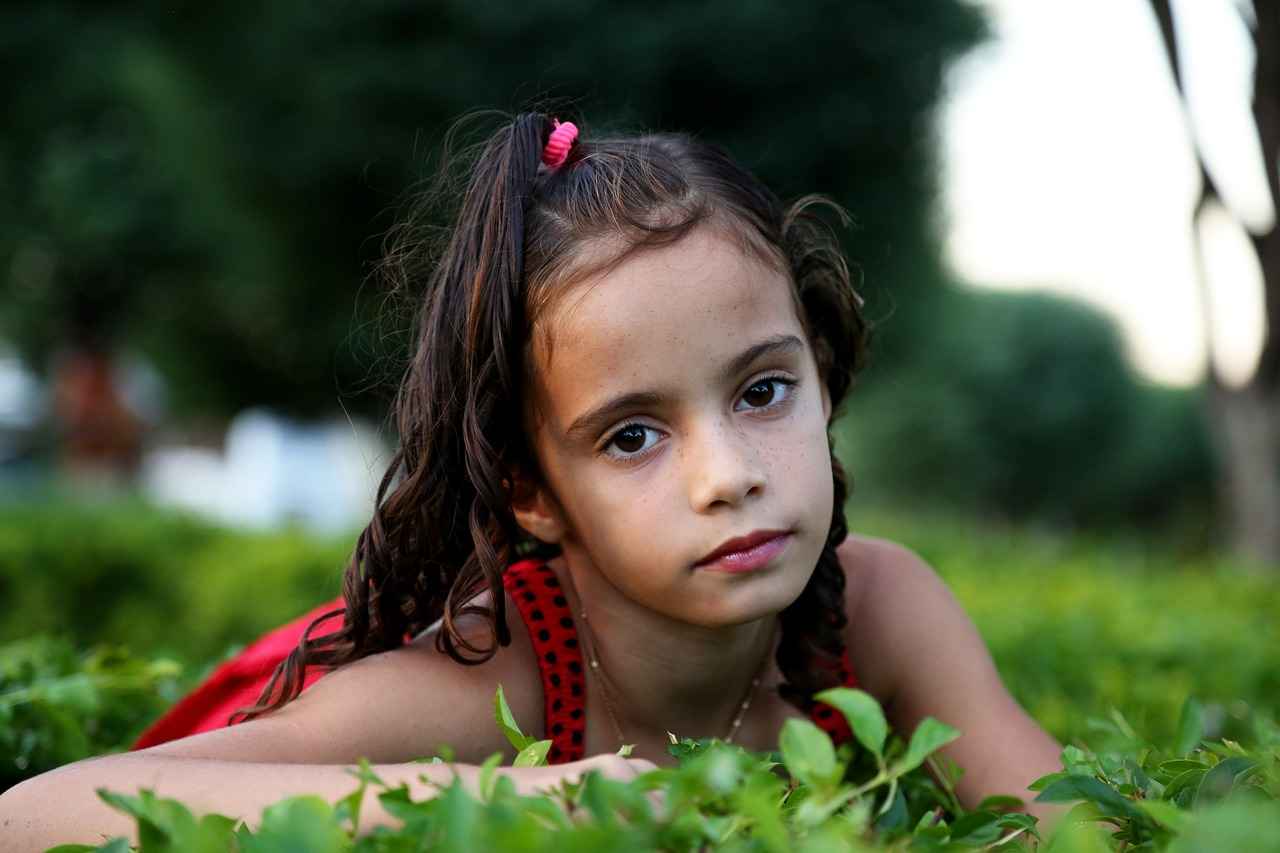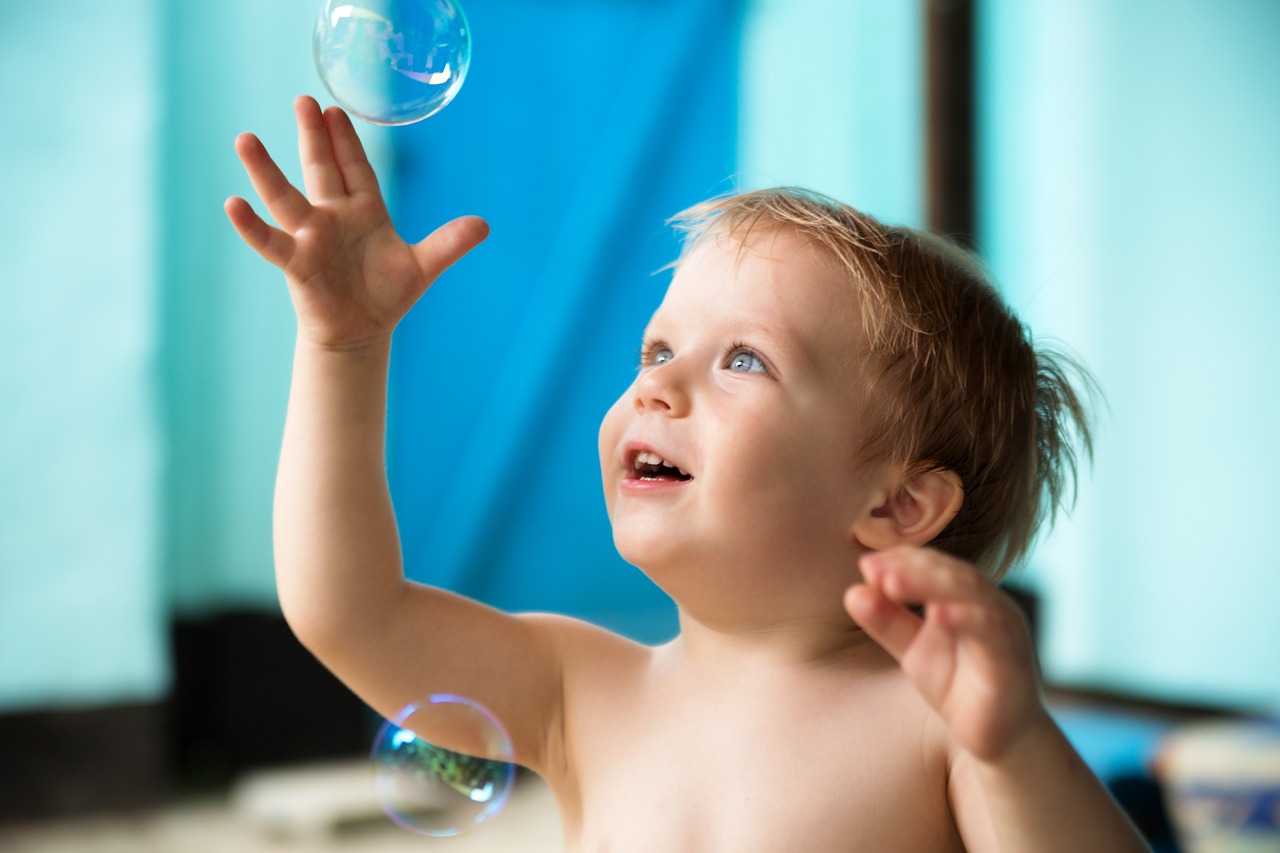This article provides a comprehensive analysis of the Barbie Movie, exploring its themes, content, and suitability for children, helping parents make informed decisions about viewing.
Understanding the Barbie Movie’s Themes
The Barbie Movie delves into a variety of themes such as empowerment, friendship, and self-discovery. These themes are carefully woven into the narrative, presenting positive messages that resonate with audiences of all ages. By analyzing these themes, parents can better gauge the film’s appropriateness for their children.
Age Appropriateness of the Film
Determining the suitable age for children to watch the Barbie Movie is crucial. This section discusses age ratings, parental guidance, and expert recommendations regarding the film’s content.
- Parental Guidance Ratings: Ratings provide insight into the film’s content, helping parents decide if it aligns with their child’s maturity level.
- Content Advisory for Parents: This section delves into specific content advisories, including any mature themes or language that may require parental discretion.
- Expert Opinions on Age Suitability: Insights from child psychologists and educators can offer valuable perspectives on the developmental appropriateness of the Barbie Movie.
Messages of Empowerment and Diversity
The Barbie Movie emphasizes messages of empowerment and diversity, promoting inclusivity and self-acceptance. These messages can positively influence young viewers.
- Representation in the Film: The inclusion of diverse characters is significant and can impact children’s perceptions of diversity.
- Empowerment through Storytelling: The storytelling techniques emphasize empowerment, encouraging children to embrace their individuality.
Potential Concerns for Parents
While the Barbie Movie has positive messages, there may be concerns regarding certain elements that parents should consider.
- Consumerism and Materialism: The portrayal of these themes raises questions about their implications for young viewers.
- Body Image and Self-Perception: This section examines how the film addresses these issues and offers guidance for parents discussing them with their children.
Conclusion: Making an Informed Decision
In conclusion, understanding the Barbie Movie’s themes, age appropriateness, and potential concerns enables parents to make informed decisions about their children’s viewing experience, ensuring it aligns with their values and expectations.

Understanding the Barbie Movie’s Themes
The Barbie Movie is more than just a colorful animation; it dives deep into significant themes that resonate with audiences of all ages. At its core, the film champions empowerment, friendship, and self-discovery. These themes are woven throughout the storyline, encouraging viewers to reflect on their own journeys and relationships.
One of the most prominent themes is empowerment. The characters in the Barbie Movie embody strength and resilience, showcasing that anyone can overcome challenges and pursue their dreams. This message is especially vital for young audiences, as it instills a sense of confidence and encourages them to believe in themselves.
Friendship plays a crucial role in the narrative, illustrating the importance of support and camaraderie. The film portrays diverse characters who come together, highlighting the value of teamwork and understanding. This representation teaches children about the significance of building strong, supportive relationships in their lives.
Additionally, the theme of self-discovery is intricately explored. The characters embark on journeys that prompt them to explore their identities, passions, and values. This aspect of the film encourages viewers, particularly children, to embrace their uniqueness and explore their own paths. It sends a powerful message that self-acceptance is fundamental to happiness.
By analyzing these themes, parents can better gauge the film’s appropriateness for their children. The positive messages embedded in the Barbie Movie not only entertain but also provide valuable lessons that can spark meaningful conversations between parents and kids. Ultimately, the film serves as a tool for fostering growth, understanding, and connection among young viewers.

Age Appropriateness of the Film
Determining the suitable age for children to watch the Barbie Movie is essential for parents to make informed decisions. This section delves into various factors that influence age appropriateness, including age ratings, parental guidance, and expert recommendations.
The Barbie Movie has been assigned a specific age rating, which serves as a guideline for parents. Understanding these ratings is crucial, as they reflect the film’s content and themes. For instance, many family-oriented films, including the Barbie Movie, typically receive a rating of G or PG, indicating that they are suitable for children, but may contain elements that require parental guidance.
| Rating | Description |
|---|---|
| G | General Audience – Suitable for all ages. |
| PG | Parental Guidance – Some material may not be suitable for children. |
Furthermore, parental guidance ratings provide insight into the film’s content. Parents should consider their child’s maturity level and sensitivity to certain themes. The Barbie Movie presents messages of friendship, empowerment, and self-discovery, which can be beneficial for young viewers. However, some scenes may require discussion to help children process the content appropriately.
Experts, including child psychologists and educators, often weigh in on the suitability of films for various age groups. Their insights can assist parents in understanding how the film’s messages may resonate with children at different developmental stages. For example, children aged 5-10 may appreciate the film’s vibrant characters and positive messages, while older children might engage more critically with its themes.
In conclusion, evaluating the age appropriateness of the Barbie Movie involves considering age ratings, parental guidance, and expert opinions. By taking these factors into account, parents can ensure that their children have a positive viewing experience that aligns with their values and understanding.
Parental Guidance Ratings
serve as an essential tool for parents when evaluating the suitability of films for their children. These ratings offer a glimpse into the film’s content, including themes, language, and potential issues, which can help parents make informed decisions. Understanding these ratings is crucial, as they provide insight into how well a movie aligns with a child’s maturity level and emotional readiness.
For instance, the Barbie Movie carries a specific parental guidance rating that reflects its themes of empowerment and friendship. Parents should consider these ratings carefully, as they can highlight important aspects of the film that may resonate differently with children of varying ages. By familiarizing themselves with the ratings, parents can better gauge whether the movie is appropriate for their children based on their unique sensitivities and experiences.
| Rating | Description |
|---|---|
| G (General Audience) | Suitable for all ages; contains no material that parents would find inappropriate. |
| PG (Parental Guidance) | Some material may not be suitable for children; parental guidance is suggested. |
| PG-13 (Parents Strongly Cautioned) | Some material may be inappropriate for children under 13; parents are strongly cautioned. |
In addition to the ratings, parents should also consider content advisories that accompany the film. These advisories can provide details regarding specific themes or language that may require parental discretion. For example, if the Barbie Movie includes moments of conflict or emotional challenges, parents may want to prepare their children for these scenes.
Ultimately, understanding parental guidance ratings not only empowers parents in their decision-making process but also fosters a more enriching viewing experience for children. By aligning the movie’s content with their child’s maturity level, parents can ensure that film-watching becomes a positive and educational activity.
Content Advisory for Parents
When considering whether to take your children to see the Barbie Movie, it is essential to understand the content advisory associated with the film. This section provides an overview of specific themes and language that may require parental discretion.
The Barbie Movie, while primarily aimed at children, does touch upon a few mature themes that parents might want to discuss with their kids. For instance, elements of friendship and empowerment are prevalent, but there are also moments that delve into complex social issues. These themes can provoke thoughtful discussions between parents and children, helping to contextualize the film’s messages.
- Language: The film contains some mild language that may not be suitable for very young viewers. Parents should be aware of this and prepare to address any questions that may arise.
- Thematic Depth: Certain scenes may explore topics such as identity and self-acceptance, which could prompt deeper conversations about personal values and societal expectations.
- Consumerism: Given Barbie’s brand, there are elements of consumerism that are subtly woven into the narrative. Parents might want to discuss these aspects with children to foster critical thinking about materialism.
Ultimately, while the Barbie Movie is designed to entertain, it also offers opportunities for learning. Parents are encouraged to view the film alongside their children to facilitate discussions about its content. This approach not only enhances the viewing experience but also strengthens the parent-child bond through shared insights.
In conclusion, understanding the content advisories associated with the Barbie Movie equips parents to make informed decisions. By being aware of the themes and language used, parents can better prepare their children for the film’s messages and promote meaningful conversations afterward.
Expert Opinions on Age Suitability
When it comes to determining whether the Barbie Movie is suitable for children, insights from child psychologists and educators are invaluable. These experts analyze the film’s content through the lens of child development, helping parents navigate the complexities of age appropriateness.
According to several child psychologists, the themes of the Barbie Movie, including empowerment and friendship, are generally positive and resonate well with young audiences. They emphasize that children aged 5 to 10 are particularly receptive to messages about self-discovery and inclusivity. This age group is at a developmental stage where they begin to form their identities and understand social dynamics, making the film’s messages impactful.
Educators also weigh in, noting that the film’s representation of diverse characters can foster discussions about inclusivity and acceptance. This is crucial for children as they learn to appreciate differences and develop empathy. However, experts caution that parental guidance is essential, especially for younger viewers, as they may not fully grasp some of the more nuanced themes presented.
Moreover, experts recommend that parents consider their child’s maturity level when deciding to watch the film. For instance, children who are sensitive to themes of consumerism or materialism may need additional context to understand the film’s messages without misinterpreting them.
In conclusion, expert opinions suggest that while the Barbie Movie offers valuable lessons, it is essential for parents to engage with their children about the film’s content. This approach not only enhances understanding but also encourages healthy discussions about the themes presented.
Comparing the Barbie Movie to Other Family Films
can provide valuable context regarding its themes, humor, and overall suitability for children. This analysis helps parents make informed choices about what their children watch, ensuring that the content aligns with their values and expectations.
When looking at the Barbie Movie in relation to other popular family films, it is essential to consider the themes presented. Many family films, such as The Lion King or Finding Nemo, also explore themes of friendship, courage, and self-discovery. However, the Barbie Movie uniquely addresses empowerment and diversity, which can resonate with young viewers in a way that is both relatable and inspiring.
In terms of humor, the Barbie Movie employs a blend of light-hearted comedy and clever wit, similar to films like Shrek or Despicable Me. This style of humor can engage children while also providing entertainment for parents, making it a family-friendly viewing experience. The balance of humor and important messages is a crucial aspect that parents should consider when evaluating the film.
| Family Film | Themes | Humor Style |
|---|---|---|
| Barbie Movie | Empowerment, Diversity | Light-hearted, Clever |
| The Lion King | Loss, Leadership | Heartwarming, Comedic |
| Finding Nemo | Family, Adventure | Witty, Slapstick |
| Shrek | Acceptance, Friendship | Satirical, Adult Humor |
Furthermore, the overall suitability for children is a vital aspect of comparison. While all films mentioned are generally appropriate for family viewing, the Barbie Movie is particularly tailored to convey positive messages about self-acceptance and inclusivity, which can significantly influence young viewers’ perceptions.
In conclusion, by comparing the Barbie Movie to other family films, parents can better understand its unique contributions to children’s media. This understanding aids in making informed decisions that align with their children’s developmental needs and family values.

Messages of Empowerment and Diversity
The Barbie Movie serves as a vibrant canvas that paints a picture of empowerment and diversity, making it a significant film for young audiences. Through its engaging storytelling, the movie encourages children to embrace their unique identities while promoting inclusivity and self-acceptance.
One of the most striking aspects of the Barbie Movie is its commitment to representation. The film features a wide array of characters from different backgrounds, cultures, and experiences. This diversity allows children to see themselves reflected on screen, fostering a sense of belonging and acceptance. As they witness characters overcoming challenges and celebrating their differences, young viewers learn valuable lessons about respecting and appreciating diversity in their own lives.
Moreover, the film’s narrative structure emphasizes the importance of empowerment. Each character embarks on a journey of self-discovery, illustrating that everyone has the potential to achieve their dreams, regardless of societal expectations. By showcasing stories of resilience and determination, the Barbie Movie inspires children to pursue their passions and believe in their capabilities. This empowerment is crucial in helping young viewers develop a positive self-image and confidence.
Additionally, the film’s themes encourage open discussions between parents and children about inclusivity and self-acceptance. Parents can use the movie as a springboard to talk about the importance of embracing differences and fostering a supportive environment for all. By engaging in these conversations, families can reinforce the film’s messages and help children internalize the values of kindness and understanding.
In conclusion, the Barbie Movie is more than just entertainment; it is a powerful tool for teaching empowerment and diversity. Its positive messages can profoundly impact young viewers, encouraging them to embrace their individuality and celebrate the differences of others.
Representation in the Film
Representation of diverse characters in the Barbie Movie is not just a narrative choice; it reflects a broader commitment to promoting diversity and inclusivity among young audiences. This film introduces a vibrant array of characters from various backgrounds, cultures, and identities, which can significantly influence children’s understanding of the world around them.
When children see characters that look like them or embody traits they can relate to, it fosters a sense of belonging and acceptance. Representation matters because it helps children realize that they are not alone in their experiences and feelings. For instance, a child from a minority background may feel empowered by a character who shares similar cultural traits, thereby enhancing their self-esteem and identity.
Moreover, the Barbie Movie challenges traditional stereotypes by showcasing characters who defy conventional norms. This approach encourages children to embrace individuality and understand that everyone has unique strengths and qualities. By presenting a diverse cast, the film sends a powerful message that everyone deserves to be celebrated for who they are.
Additionally, the portrayal of diverse characters can stimulate important conversations about acceptance and empathy. Parents and guardians can use these moments to discuss the significance of understanding and appreciating differences in others. This not only broadens children’s perspectives but also nurtures a more inclusive mindset as they grow.
In conclusion, the representation of diverse characters in the Barbie Movie plays a crucial role in shaping children’s perceptions of diversity and inclusivity. By exposing them to a variety of characters, the film encourages young viewers to embrace differences, fostering a more compassionate and understanding generation.
Empowerment through Storytelling
The Barbie Movie utilizes a variety of storytelling techniques to convey powerful messages of empowerment, encouraging children to embrace their uniqueness and follow their aspirations. Through relatable characters and engaging narratives, the film crafts a world where individuality is celebrated and dreams are within reach.
One of the most effective methods employed in the movie is the use of character development. Each character embarks on a journey of self-discovery, facing challenges that resonate with young audiences. For instance, the protagonist learns to overcome self-doubt and societal pressures, ultimately demonstrating that it is okay to be different. This journey not only entertains but also serves as a valuable lesson for children about the importance of self-acceptance.
Moreover, the film integrates diverse storylines that reflect various backgrounds and experiences. By showcasing characters from different cultures and walks of life, the Barbie Movie promotes inclusivity and teaches children that everyone has a unique story worth sharing. This representation is crucial in helping young viewers understand and appreciate diversity, fostering empathy and respect for others.
The use of humor and light-hearted moments throughout the film also plays a significant role in its storytelling. These elements make the film enjoyable while subtly imparting important life lessons. Children are more likely to absorb messages of empowerment when they are presented in an entertaining manner, leading to a more profound impact on their development.
In conclusion, the storytelling techniques in the Barbie Movie not only entertain but also empower children to embrace their true selves. By highlighting themes of individuality, diversity, and resilience, the film inspires young viewers to pursue their dreams with confidence and courage.

Potential Concerns for Parents
While the Barbie Movie delivers numerous positive messages about empowerment and diversity, there are certain elements that may raise concerns among parents. It is essential for parents to be aware of these potential issues before deciding whether to allow their children to watch the film.
- Consumerism and Materialism: The Barbie franchise has often been critiqued for its portrayal of consumerism. In the movie, viewers may notice an emphasis on lavish lifestyles and material possessions. Parents should consider how these themes might influence children’s perceptions of success and happiness. Discussing the difference between needs and wants can help mitigate any negative impacts.
- Body Image and Self-Perception: The representation of Barbie has historically been linked to unrealistic body standards. While the movie attempts to address body positivity, parents should be prepared to engage in conversations about body image and self-acceptance. Encouraging children to appreciate diverse body types can foster healthier self-esteem.
- Gender Stereotypes: Although the film promotes empowerment, some elements may still reinforce traditional gender roles. Parents might want to discuss these portrayals with their children, emphasizing the importance of breaking stereotypes and valuing individual capabilities over gender norms.
- Emotional Themes: The Barbie Movie touches on complex emotional themes, such as friendship and betrayal. While these are important lessons, younger viewers may find some scenes challenging to process. Parents should be ready to provide support and guidance, helping children navigate their feelings about these topics.
In summary, while the Barbie Movie offers valuable lessons, it is crucial for parents to consider these potential concerns. Open discussions with children can enhance their viewing experience and help them develop critical thinking skills regarding the messages conveyed in the film.
Consumerism and Materialism
have become prominent themes in the Barbie franchise, sparking discussions among parents and educators regarding their impact on young viewers. The portrayal of these concepts in the Barbie Movie raises significant questions about the messages conveyed to children and how they might shape their perceptions of self-worth and success.
Throughout the film, Barbie is often depicted in various glamorous settings, adorned with an array of fashionable outfits and accessories. This imagery can inadvertently promote a culture of materialism, where value is placed on possessions rather than personal qualities. For young viewers, this may lead to the belief that happiness and success are directly tied to the acquisition of material goods.
Moreover, the film’s emphasis on consumerism is evident in its marketing strategies, which include a vast array of merchandise associated with the movie. This approach can create a sense of pressure among children to keep up with trends and acquire the latest toys or clothing, fostering a mindset that equates self-worth with ownership.
While the Barbie Movie does include positive messages about empowerment and friendship, the juxtaposition of these themes with consumerism raises concerns. Parents may wonder how to address these conflicting messages with their children. Open discussions about the difference between wanting and needing can help children develop a healthier understanding of material possessions.
In conclusion, while the Barbie Movie offers entertaining narratives and empowering messages, the underlying themes of consumerism and materialism warrant careful consideration. By engaging in conversations about these topics, parents can help foster critical thinking in their children, encouraging them to appreciate values beyond material wealth.
Body Image and Self-Perception
Body image and self-perception are vital aspects of personal development, especially for children who are in their formative years. The Barbie Movie tackles these significant themes, providing a platform for discussions between parents and their children regarding how they view themselves and others.
The film presents a diverse range of characters, each with unique traits and backgrounds, which helps to promote inclusivity. This representation is crucial as it encourages children to appreciate differences and fosters a sense of belonging. By showcasing characters of various sizes, colors, and abilities, the Barbie Movie sends a clear message that beauty is not one-dimensional. This can help children understand that their value is not determined by their appearance alone.
Moreover, the movie’s narrative emphasizes the importance of self-acceptance and confidence. Through engaging storytelling, young viewers are encouraged to embrace their individuality rather than conform to societal standards. This aspect of the film is particularly important as it can inspire children to pursue their passions and express themselves freely.
To facilitate discussions about body image and self-perception, parents can consider the following strategies:
- Open Conversations: Encourage children to share their thoughts about the characters and their own feelings regarding body image.
- Positive Reinforcement: Highlight the qualities that make each character special, reinforcing that everyone has unique attributes that contribute to their identity.
- Critical Thinking: Discuss the media’s portrayal of beauty and how it can differ from reality, helping children develop a critical eye towards societal expectations.
In conclusion, the Barbie Movie serves as an effective medium for addressing body image and self-perception. By engaging in conversations inspired by the film, parents can help their children cultivate a healthy self-image and foster a positive outlook on diversity and individuality.

Conclusion: Making an Informed Decision
In the realm of children’s entertainment, the Barbie Movie stands out as a significant cultural phenomenon. As parents navigate the complexities of media consumption for their children, it becomes imperative to delve into the film’s content, themes, and overall suitability. By doing so, parents can ensure that the viewing experience is enriching and aligns with their family values.
The Barbie Movie encapsulates vital themes such as empowerment, friendship, and self-discovery. These messages resonate not only with children but also with adults, fostering discussions around personal growth and resilience. Parents who take the time to understand these themes can better assess whether the film’s messages align with their expectations and the lessons they wish to impart to their children.
Determining the appropriate age for viewing the Barbie Movie is crucial. With various age ratings and parental guidance recommendations available, parents are equipped with tools to evaluate whether their child is ready for the film. Expert opinions from child psychologists can further illuminate the developmental considerations necessary when deciding on age suitability.
While the movie promotes positive messages, parents should also be aware of potential concerns. Issues related to consumerism and body image are prevalent in the Barbie franchise. By addressing these topics openly with children, parents can help them navigate the complexities of modern media and develop a healthy self-perception.
In summary, a thorough understanding of the Barbie Movie‘s themes, age appropriateness, and potential concerns empowers parents to make informed decisions about their children’s viewing experiences. This ensures that the film not only entertains but also contributes positively to their child’s development and aligns with family values.
Frequently Asked Questions
- Is the Barbie Movie suitable for all ages?
The Barbie Movie is generally suitable for children, but age appropriateness varies. It’s important for parents to consider the themes and content, as well as the child’s maturity level before deciding.
- What are the main themes of the Barbie Movie?
The film focuses on themes of empowerment, friendship, and self-discovery. These positive messages can resonate well with both kids and adults, making it an engaging watch for the whole family.
- Does the movie address body image issues?
Yes, the Barbie Movie addresses body image and self-perception, encouraging viewers to embrace their individuality. It’s a great conversation starter for parents to discuss these important topics with their children.
- Are there any concerns regarding consumerism in the film?
While the Barbie franchise does portray elements of consumerism and materialism, the movie also emphasizes deeper values like friendship and self-acceptance, which can help balance these themes.
- How can parents prepare their kids for watching the movie?
Parents can watch the Barbie Movie together with their children and discuss its themes. This can help kids understand the messages and foster a healthy dialogue about the film’s content.












